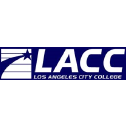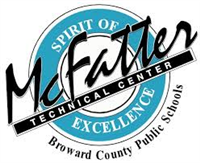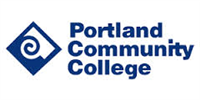What do they do?
Construct and repair full or partial dentures or dental appliances.
Also known as:
Ceramist, Certified Dental Technologist (CDT), Crown and Bridge Dental Laboratory Technician (Crown and Bridge Dental Lab Tech), Crown and Bridge Technician (Crown and Bridge Tech), Dental Ceramist, Dental Laboratory Technician (Dental Lab Tech), Dental Technician (Dental Tech), Dental Technologist, Denture Finisher, Denture Laboratory Technician (Denture Lab Tech), Denture Technician (Denture Tech), Denture Waxer, Laboratory Technician (Lab Tech), Metal Finisher, Metal Room Dental Technician (Metal Room Dental Tech), Model and Dye Person, Model Technician (Model Tech), Orthodontic Laboratory Technician (Ortho Lab Tech), Orthodontic Technician (Ortho Tech), Porcelain Finisher, Porcelain Technician (Porcelain Tech), Waxer
-
0%
Change
Ranks #29 in job growth rate130Job Openings
Ranks #7 in net job growth
Looking for colleges that offer a specific major? Use the College Match Tool to find your best-matched schools and discover your estimated Net Price!
- Some college, no degree (32%)
- High school diploma equivalent (27%)
- Associate's degree (18%)
- Bachelor's degree (16%)
- Less than high school diploma (4%)
- Master's degree (2%)
- Doctorate or Professional Degree (1%)
People in this career often know a lot about:
- Administration and Management - Knowledge of business and management principles involved in strategic planning, resource allocation, human resources modeling, leadership technique, production methods, and coordination of people and resources.
- Design - Knowledge of design techniques, tools, and principles involved in production of precision technical plans, blueprints, drawings, and models.
- English Language - Knowledge of the structure and content of the English language including the meaning and spelling of words, rules of composition, and grammar.
- Medicine and Dentistry - Knowledge of the information and techniques needed to diagnose and treat human injuries, diseases, and deformities. This includes symptoms, treatment alternatives, drug properties and interactions, and preventive health-care measures.
- Production and Processing - Knowledge of raw materials, production processes, quality control, costs, and other techniques for maximizing the effective manufacture and distribution of goods.
- Education and Training - Knowledge of principles and methods for curriculum and training design, teaching and instruction for individuals and groups, and the measurement of training effects.
- Customer and Personal Service - Knowledge of principles and processes for providing customer and personal services. This includes customer needs assessment, meeting quality standards for services, and evaluation of customer satisfaction.
People in this career often have talent in:
- Finger Dexterity - The ability to make precisely coordinated movements of the fingers of one or both hands to grasp, manipulate, or assemble very small objects.
- Near Vision - The ability to see details at close range (within a few feet of the observer).
- Arm-Hand Steadiness - The ability to keep your hand and arm steady while moving your arm or while holding your arm and hand in one position.
- Control Precision - The ability to quickly and repeatedly adjust the controls of a machine or a vehicle to exact positions.
- Visualization - The ability to imagine how something will look after it is moved around or when its parts are moved or rearranged.
- Problem Sensitivity - The ability to tell when something is wrong or is likely to go wrong. It does not involve solving the problem, only recognizing that there is a problem.
- Deductive Reasoning - The ability to apply general rules to specific problems to produce answers that make sense.
- Information Ordering - The ability to arrange things or actions in a certain order or pattern according to a specific rule or set of rules (e.g., patterns of numbers, letters, words, pictures, mathematical operations).
People in this career often do these activities:
- Read work orders or other instructions to determine product specifications or materials requirements.
- Inspect medical or dental assistive devices.
- Construct customized assistive medical or dental devices.
- Repair medical or dental assistive devices.
- Prepare materials for processing.
- Measure clients to ensure proper product fit.
- Apply parting agents or other solutions to molds.
- Trim excess material from workpieces.
- Polish materials, workpieces, or finished products.
- Load items into ovens or furnaces.
- Cast molds of patient anatomies to create medical or dental devices.
- Instruct workers to use equipment or perform technical procedures.
- Direct operational or production activities.
- Mix ingredients to create specific finishes.
- Place materials into molds.
- Melt metal, plastic, or other materials to prepare for production.
- Prepare medical supplies or equipment for use.
- Shape metal workpieces with hammers or other small hand tools.
- Solder parts or workpieces.
- Fill cracks, imperfections, or holes in products or workpieces.
This page includes data from:

 Occupation statistics: USDOL U.S. Bureau of Labor Statistics Occupational Employment Statistics
Occupation statistics: USDOL U.S. Bureau of Labor Statistics Occupational Employment Statistics
 Videos: CareerOneStop, USDOL/ETA and the Minnesota Department of Employment & Economic Development
Videos: CareerOneStop, USDOL/ETA and the Minnesota Department of Employment & Economic Development







